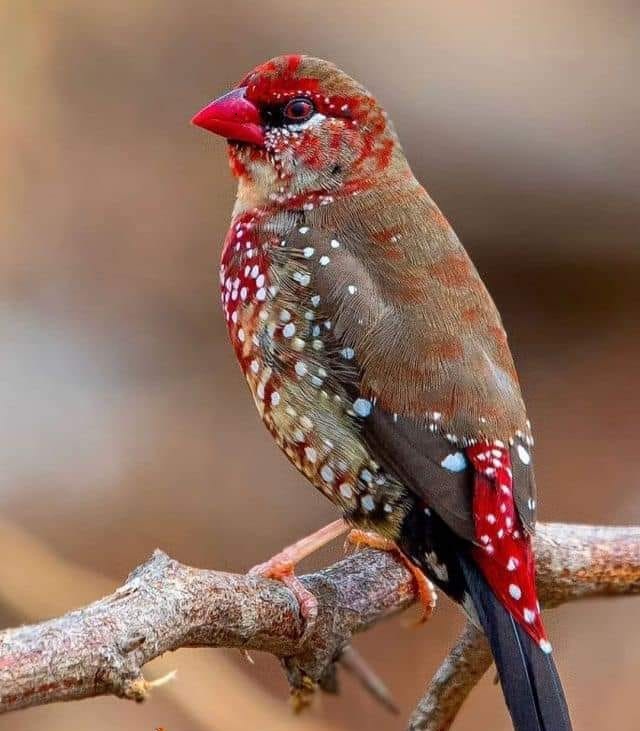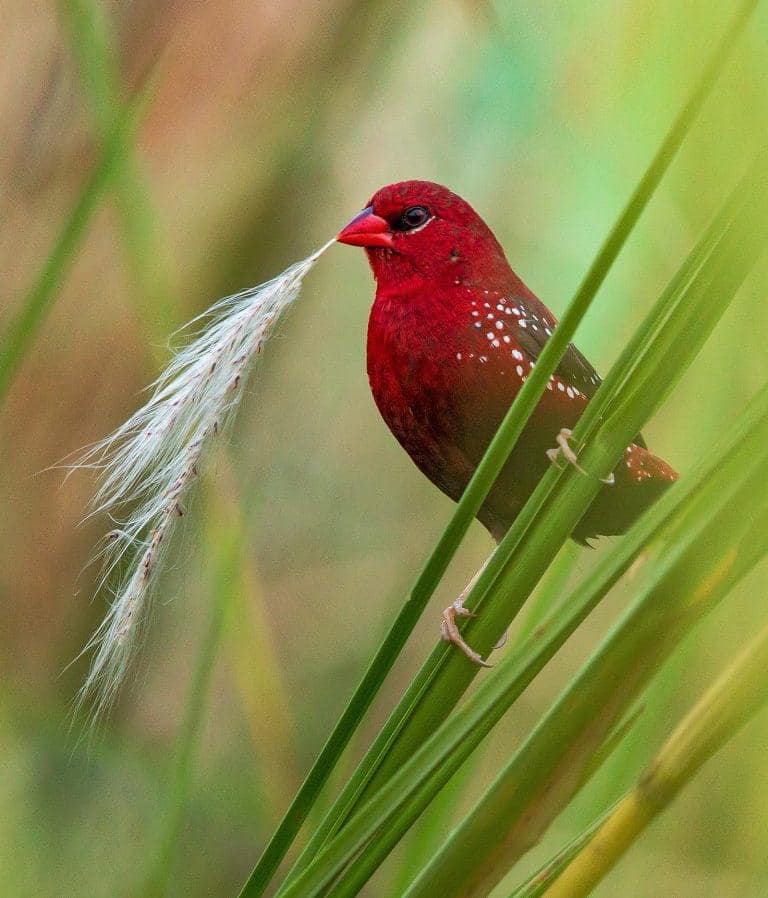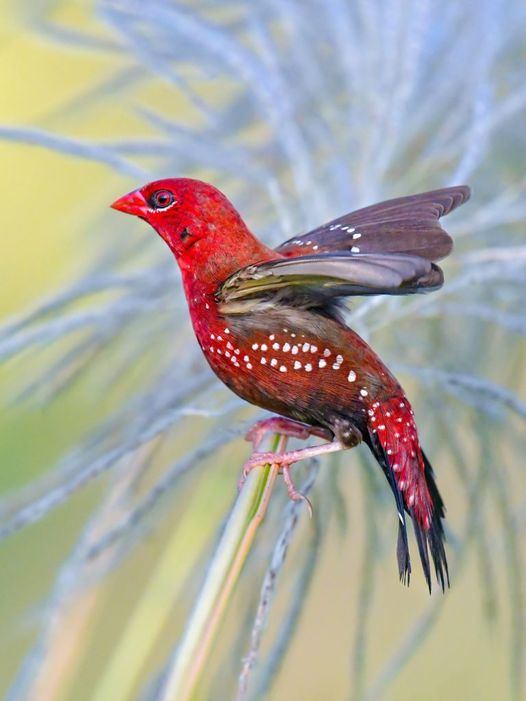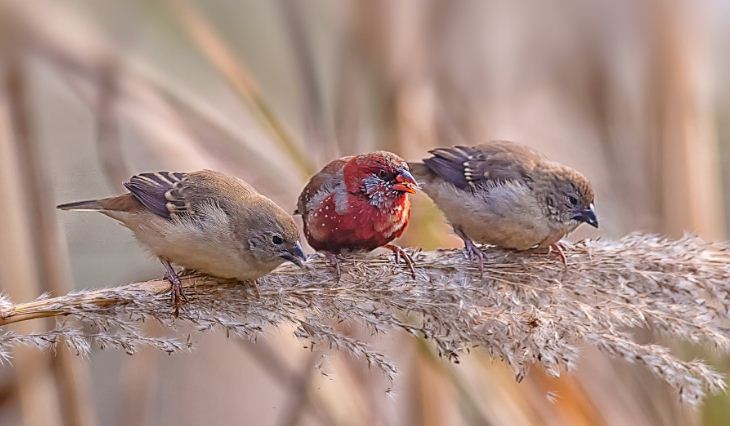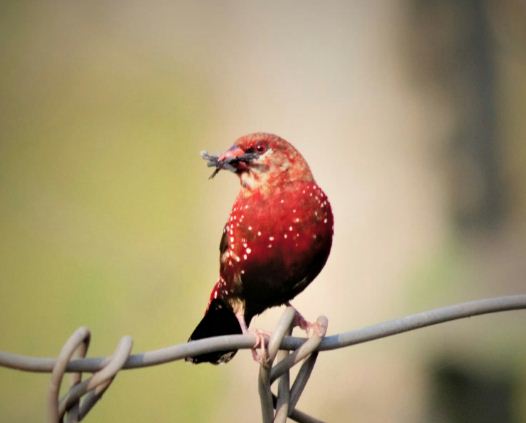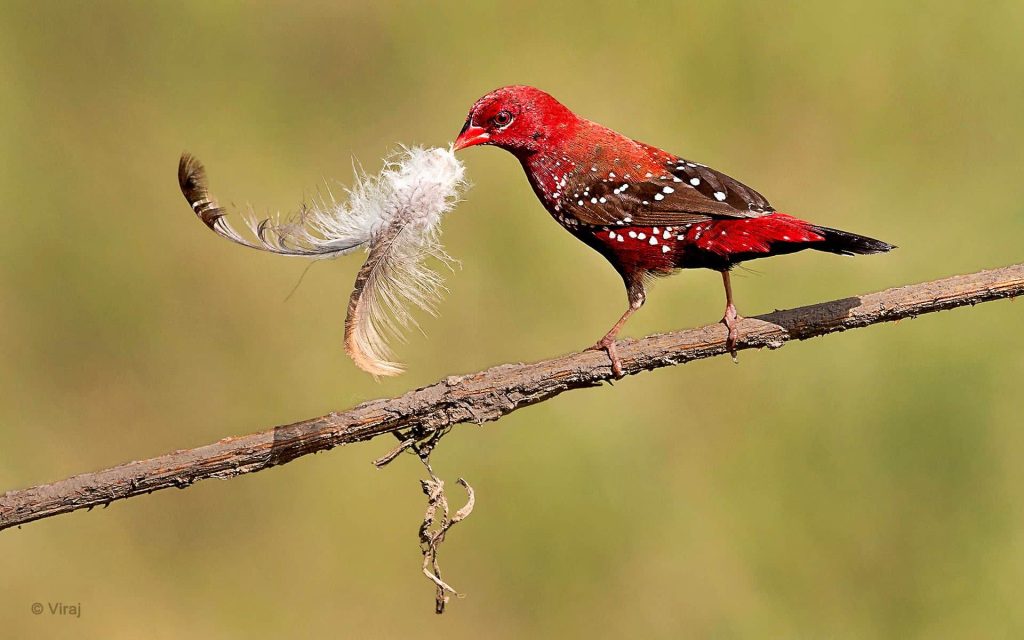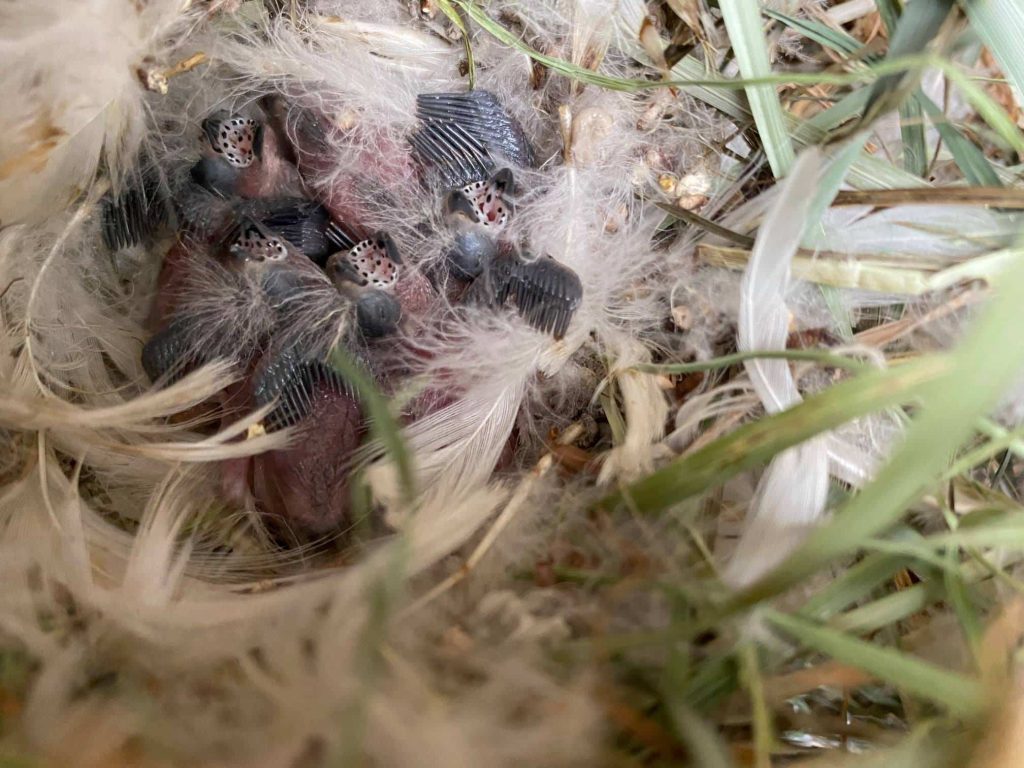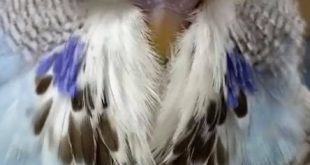Introduction
The Red Avadavat Finch, also known as the Strawberry Finch or Red Munia, is a small bird species that belongs to the family of Estrildidae. These birds are native to the Indian subcontinent and have been introduced to many other parts of the world, where they are often kept as pets or for their beautiful plumage. In this article, we will discuss the physical characteristics, habitat, behavior, diet, and breeding habits of the Red Avadavat Finch.
Physical Characteristics
The Red Munia Finch is a small bird that measures approximately 10 cm in length and weighs around 8-10 grams. These birds have a distinctive red coloration, with the males having a bright red plumage and the females being slightly duller in color. The male’s red coloration is more intense during the breeding season, which is usually from January to August. The male also has a black mask around its eyes, while the female has a lighter-colored mask.
The Red Avadavat Finch has a short, conical beak that is designed for cracking small seeds. Their wings are rounded, and their tail is short and square-shaped. These birds have strong legs and feet, which are used for perching and hopping on the ground. They also have sharp claws that help them to cling onto branches and twigs.
Habitat
The Strawberry Finch is native to the Indian subcontinent and can be found in a variety of habitats, including grasslands, forests, and wetlands. These birds prefer areas with thick vegetation, where they can hide and nest. They are also commonly found near water sources such as ponds, lakes, and rivers.
Behavior
The Red Munia Finch is a social bird that lives in small flocks. They are active during the day and spend most of their time foraging for food. These birds are very agile and can hop and climb on branches and twigs with ease. They also take dust baths, which helps to keep their feathers clean and healthy.
Diet
The Red Avadavat Finch is primarily a seed-eating bird. They feed on a variety of small seeds, including grass seeds, weed seeds, and rice grains. They also eat insects and other small invertebrates, especially during the breeding season when they need extra protein for egg-laying and chick-rearing.
Breeding Habits
The breeding season of this Finch usually occurs from January to August. During this time, the males display their bright red plumage and perform a courtship display to attract females. The male will puff up his feathers, hop around the female, and sing a soft, melodious song.
Once a pair has formed, the male will build a nest using grass, twigs, and feathers. The nest is typically a small, cup-shaped structure that is built in a thick shrub or tree. The female will lay 4-6 eggs, which are incubated by both parents for around 12-14 days. Once the chicks hatch, both parents will take turns feeding and caring for them until they fledge, which usually takes around 14-16 days.
Threats
The Strawberry Finch is not considered to be a threatened species, and their population is stable. However, they are often trapped and sold in the pet trade, which has led to a decline in their numbers in some areas. Additionally, habitat loss and fragmentation due to deforestation and urbanization can also pose a threat to their survival.
The Red Avadavat Finch is a beautiful and fascinating bird that is native to the Indian subcontinent. These birds are admired for their bright red coloration and melodious song. They are also important for maintaining the ecological balance.
What is life expectancy of red avadavat?
The lifespan of a Red Avadavat Finch in the wild is not well documented, but it is estimated to be around 3-5 years. However, these birds can live longer in captivity, with some individuals living up to 8-10 years under ideal conditions.
The lifespan of this popular Finch can be influenced by a number of factors, including genetics, diet, habitat quality, and the presence of predators or disease. In captivity, providing a healthy diet, spacious living conditions, and regular veterinary care can help to ensure that these birds live a long and healthy life. It is also important to note that birds that are well-cared for and kept in good conditions tend to have a longer lifespan than those that are neglected or kept in poor conditions.
Why Red Avadavat is popular?
The Red Munia Finch is known for its bright red plumage, which is a result of specialized feathers called melanin-based pigmented feathers. These feathers are responsible for the bird’s coloration and are also important for thermoregulation and protection from the elements.
In addition to their bright red feathers, the Red Avadavat Finch also has specialized feathers on its wings and tail that help it to fly and maneuver through the air. The wings of these birds are composed of several types of feathers, including primary feathers, which are located at the tip of the wing and provide lift, and secondary feathers, which are located behind the primary feathers and provide stability and maneuverability. These feathers are arranged in a specific pattern that allows the bird to fly efficiently and effectively.
The tail feathers of the Red Avadavat Finch are also specialized for flight and balance. These feathers are long and narrow and are arranged in a fan-like shape. The tail feathers work in conjunction with the wings to help the bird maintain its balance and control during flight. They also play a role in courtship displays and other social behaviors, as the male will often spread his tail feathers to attract a mate or display dominance.
The Red Finch Avadavat has specialized feathers on its head and neck that help to protect it from the elements and potential predators. These feathers are thick and insulating, providing protection from the cold and wind. They also help to camouflage the bird in its natural habitat, making it less visible to predators.
Where does the red avadavat live?
This Finch is native to the Indian subcontinent and Southeast Asia. Its natural range spans from Pakistan and India in the west to Indonesia and the Philippines in the east. Within this range, the bird can be found in a variety of habitats, including grasslands, shrublands, wetlands, and agricultural areas.
In India, the Red Avadavat is primarily found in the central and eastern regions of the country, including the states of Bihar, West Bengal, and Odisha. The bird is also found in southern India, particularly in the states of Karnataka and Tamil Nadu. In Pakistan, the Red Avadavat is found primarily in the Punjab and Sindh provinces.
In Southeast Asia, the Red sparrow Avadavat is found in a range of countries, including Myanmar, Thailand, Vietnam, Cambodia, Laos, Malaysia, Indonesia, and the Philippines. The bird can be found in a variety of habitats in these countries, including grasslands, rice paddies, marshes, and forest edges.
In terms of altitude, the Red Munia is generally found at lower elevations, although it can occasionally be found at higher elevations in certain parts of its range. The bird is generally non-migratory, although it may make short movements in response to changes in food availability or other environmental factors. Overall, the Red Avadavat is a widespread and adaptable species that can be found in a range of habitats throughout its range.
Red avadavat male vs female
The male and female Red Finch Avadavat differs in their physical appearance, behavior, and vocalizations.
Physical Appearance:
Male Red Avadavat Finches are brightly colored with a vibrant red plumage that covers their entire body, except for their wings and tail, which are brown. The male also has a black beak, while the female has a lighter-colored beak. In contrast, the female Red Avadavat Finch has a more subdued appearance, with a brownish-grey body and lighter-colored underparts. She also has a less prominent beak than the male.
Behavior:
Male Red strawberry Finches are more aggressive and territorial than females. During the breeding season, males will defend a territory and court females with elaborate displays, including singing and fluffing their feathers. Females are typically more social and will form small flocks with other females outside of the breeding season.
Vocalizations:
Male and female Red Avadavat Finches have different vocalizations. Males have a distinctive, melodious song that they use to attract mates and defend their territory. The song is composed of a series of short, rapid notes that are delivered in a rhythmic pattern. In contrast, female Red Avadavat Finches have a simpler, more monotonous call that is used for communication within their flock.
The physical differences between male and female in these Finches are quite distinct, with the male’s bright red plumage standing out in stark contrast to the female’s more subdued appearance. Additionally, the behavioral and vocal differences between the sexes are also notable, with males being more territorial and vocal than females.
Red avadavat sound
The Red sparrow Avadavat is known for its melodious and distinctive song, which is primarily produced by male birds during the breeding season. The song is composed of a series of short, rapid notes that are delivered in a rhythmic pattern. The notes are typically high-pitched and flute-like, with a trilling quality that is often described as “chirpy” or “bubbly”.
The Red Avadavat’s song is an important aspect of its courtship display, as males use it to attract mates and defend their territory. During the breeding season, males will sing from a high perch, such as a tree or shrub, while fluffing their feathers and displaying their bright red plumage. The song is often accompanied by other visual displays, such as head-bobbing and wing-fluttering, which help to further attract mates and intimidate rivals.
In addition to their song, these Finches also produce a variety of other vocalizations, including calls and alarm notes. The calls are used for communication within flocks and between mates, while the alarm notes are used to alert other birds to potential threats, such as predators.
The Red Munia Finch is a highly vocal species that uses a variety of sounds to communicate and interact with others. Its melodious song is a particularly important aspect of its behavior, as it plays a key role in courtship displays and territorial defense.
red avadavat call
In addition to their melodious song, the Red Avadavat Finch produces a variety of calls and vocalizations for communication with other members of its species. These calls can serve a range of functions, from coordinating flock movements to signaling potential danger or alarm.
One common call produced by the Strawberry Avadavat is a sharp, metallic “tink” or “ting” sound. This call is often used by birds in flight, and may be used to signal others in the flock to follow or to warn of danger. The call is typically high-pitched and repetitive, and may be heard frequently in areas where Red Avadavats are present.
Another common call produced by the Red Avadavat is a soft, chattering sound. This call is often used by birds in flocks or pairs, and may be used to signal communication and social bonding. The call is typically less high-pitched than the “tink” call, and may be heard in a variety of contexts, including during feeding and grooming behaviors.
Red Munia may also produce alarm calls in response to potential danger or threats. These calls are typically loud and rapid, and may be accompanied by visual displays such as wing-fluttering or tail-flicking. Alarm calls may also be used to signal other birds in the flock to flee or take cover.
This Finch is a highly vocal species that uses a range of calls and vocalizations for communication and social interaction. Their calls can serve a variety of functions, from coordinating flock movements to signaling danger or alarm.
What is cost of red avadavat finch?
We do not have access to real-time market information on the sale price of Red strawberry Finches. However, it is important to note that in many countries, the sale and trade of Red Avadavats is illegal due to their protected status as a threatened or endangered species.
Instead, it is recommended to seek out captive-bred Red Avadavats from reputable breeders or pet stores. Prices for captive-bred Red Avadavats can vary depending on factors such as location, availability, and demand. It is important to research and compare prices from multiple sources before making a purchase, and to ensure that the birds are being sold legally and ethically.
Red avadavat nest
The Red Avadavat Finch builds a compact, cup-shaped nest made of grass, twigs, and other plant materials. The nest is typically built low in shrubs or trees, and is often concealed among foliage or vines. The female is primarily responsible for building the nest, although the male may assist by bringing materials to the nest site.
Their nests are often lined with soft materials such as feathers or plant down, which help to cushion and insulate the eggs. The female typically lays 3-6 eggs per clutch, which are white or creamy in color with brown speckling. The eggs are incubated by both parents for around 11-13 days, after which the chicks hatch.
Once the chicks hatch, both parents are responsible for feeding and caring for them. Red Avadavat chicks are altricial, which means that they are born relatively undeveloped and require extensive care and feeding in order to grow and develop. The chicks are fed a diet of insects and other small invertebrates, which the parents gather from the surrounding environment.
After around 16-18 days, the chicks are ready to fledge, or leave the nest. At this point, they are able to fly and begin to explore the surrounding area with their parents. The parents continue to feed and care for the chicks for several more weeks until they are fully independent and able to fend for themselves.
What is red avadavat scientific name?
The scientific name of the Red Munia Finch is Amandava amandava. The species belongs to the family Estrildidae, which includes a diverse group of small, colorful finches commonly known as waxbills or munias. Within this family, the Red Avadavat belongs to the genus Amandava, which contains several other species of finches found in Asia and Africa.
Red avadavat wingspan
The wingspan of a strawberry Finch, like its body size, is relatively small compared to other bird species. The average wingspan of a Red Avadavat is approximately 12-14 centimeters (4.7-5.5 inches).
This relatively small wingspan is well-adapted for the bird’s arboreal lifestyle, allowing it to maneuver easily through the dense foliage of trees and shrubs where it typically lives and forages. While the Red Avadavat’s wingspan may not be particularly large, it is still an important adaptation that helps this species to survive and thrive in its natural habitat.
article source by Google: wikipedia
